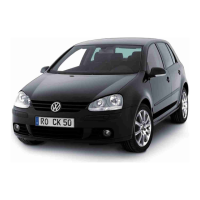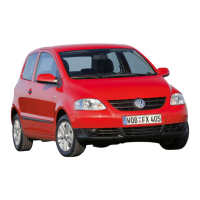WARNING
The minimum installation temperature of a tyre is 15 °C and
the temperature in the core of the tyre should not be more than
30 °C.
• To install tyres without damage, it is especially important to
warm the upper part of the sidewall and the inside of the upper
bead to at least 15 °C.
• This internal temperature is referred to as the core tempera‐
ture.
• Rubber is a poor conductor of heat, therefore a cold tyre must
be left in an area with the correct temperature for a sufficiently
long period so the inner rubber layers can warm up to at least
15 °C.
• The surface temperature of the tyre during the warming up
phase is no indication of its internal temperature.
• To enable cold tyres to absorb heat from the ambient air as
quickly as possible, they should not be stacked on top of one
another but instead stored individually in order to allow the
warm air to “flow” around them effectively.
• Tyres must never be placed in front of a radiator or hot air
blower for warming, since this can very quickly lead to critical
surface temperatures.
• Except for warming with warm water or warm ambient air
(max. 50 °C), there is no process available for warming tyres
without damaging the tyre!
• When cold tyres (below 0 °C) are transferred to a warm envi‐
ronment (above 0 °C), a layer of condensation immediately
forms on the surface of the tyre. This layer of condensation
indicates that the tyre is intensively absorbing heat from its
environment through the process of water vapour in the air
condensing out on the tyre surface.
• If the layer of condensation is in liquid form and leads to mois‐
ture on the surface, it should be dried off with a cloth otherwise
the continuation of the warming process might be curtailed by
cold due to evaporation.
Warming times:
♦ Assuming a minimum room temperature of 19 °C and a tyre
temperature of 0 °C or more, a tyre should be kept at least at
19 °C for at least 2 hours
♦ Assuming a minimum room temperature of 19 °C and a tyre
temperature of below 0 °C, a tyre should be kept at least at 19
°C for at least 2.5 hours
Warming recommendations:
♦ If possible, the tyres should be kept in the workshop for 1 day
before installation (preparation for the job).
♦ Store on an insulated base, pallet or the like, as high up as
possible
♦ Position the tyres individually to allow the warm air to “flow”
around them effectively
♦ Wipe off condensation
♦ Never heat with a radiator or hot air blower!
Golf 2004 ➤ , Golf Plus 2005 ➤
Running gear, axles, steering - Edition 08.2009
5. Removing and fitting tyres with run-flat capability to wheel rims 295

